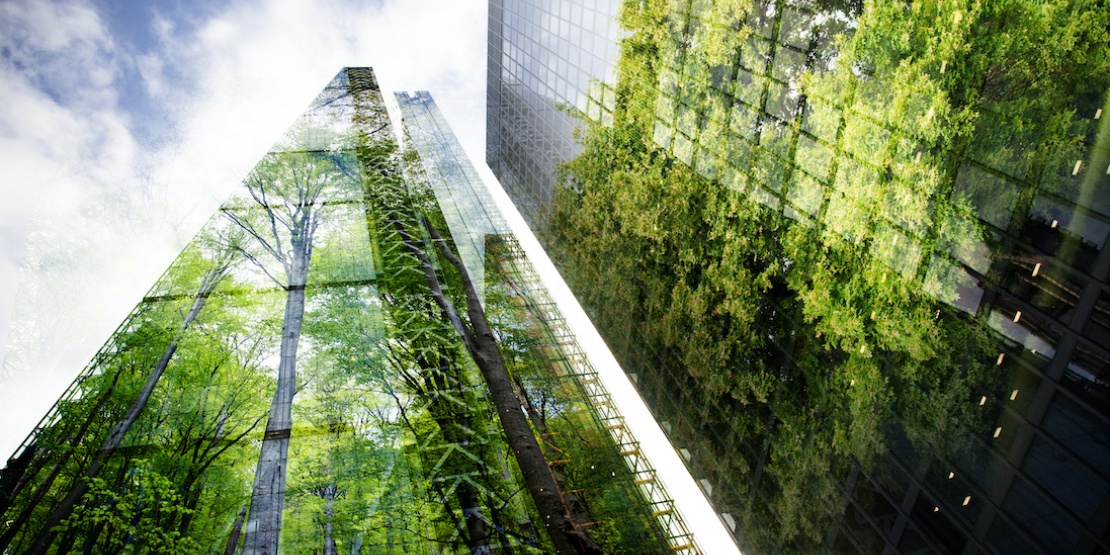Both businesses and human beings are intrinsically dependent on the planet's natural resources (water, soil, etc.), as well as on ecosystem services[1]. All of this is grouped under the term "natural capital". Today, more than ever, we need to integrate this natural capital into societal planning as well as into companies’ accounting economic models. What do we need to know about natural capital, and why should companies care?
What is natural capital?
The term "natural capital" is defined as the estimated value of all the natural resources society uses or exploit to produce goods and services.
Natural capital is composed of a range of elements:
- Forests;
- Soil;
- Oil;
- Plant species;
- Animal species;
- Minerals;
- Water;
- Air, and so on.
Ecosystems and ecosystem services, such as crop pollination or climate regulation, are also part of natural capital, or in other words: environmental assets supporting the current production framework.
The problem with using these resources comes from their overuse and overexploitation. According to a real-time estimate, it would currently take almost 1.8 times the volume of the Earth to produce the resources consumed by humans and to absorb their waste. As such, we cannot possibly maintain the current production system. A new system needs to be put into effect to understand the risks and opportunities of our natural assets and learn how we can reduce the strain on our ecosystems.
The concept of natural capital was created to emphasise the importance of conservation and sustainable management of natural resources in the global economy, not to mention the possible benefits they can provide in terms of promoting social ecosystems and world health. A company should therefore include it in their list of natural capital, in the same way they would human capital, technical capital, etc.
Business and natural capital: why should you care?
Respect for natural capital is a key element for public sector and private sector companies looking into sustainable management and sustainable economic performance. There are many reasons why they should consider natural capital in their strategy.
1 – Limited natural resources
Natural resources are dwindling, which increases their price. Companies using them as raw materials may therefore see their bills rise. The solution for avoiding damage to their economic activities is to manage these natural resources sustainably.
2 – Long-term economic sustainability
Human life, businesses and industries depend on ecosystem services. Without them, economic development cannot happen. It is vital that they are not destroyed or overexploited to ensure long-term economic sustainability. Companies can adapt more easily to the changing environment by incorporating this consideration into their own framework, making it an intrinsic part of their value.
3 – Major stakeholder commitments
Today, consumers, partners and stakeholders are more interested than ever in what companies are doing for sustainability and the environment. Some of them are now experiencing rapid growth because of making natural capital central to their business strategy. They stand out from the competition by improving their brand image, notably by providing information advertising their role in conserving ecosystem services, so that they can attract more and more investors who are also increasingly committed to environmental issues.
Implementing a sustainable procurement strategy is also an effective way to approach these issues.
4 – Compliance with regulations
In addition to direct and indirect benefits for the company and nature, it is also a legal obligation to include natural capital in your planning. Sustainability regulations are becoming more stringent. Companies that fail to mitigate the impact of their activities on natural capital can face high compliance costs and the risk of legal action.
CSR is a strategic lever for the company and includes respect for natural capital in its values.
How does natural capital affect the economy?
A company’s economic activity is largely dependent on the planet’s natural resources and therefore on natural capital. However, this is being depleted more and more rapidly. Over the past 50 years, the degradation of natural capital has put the environment at risk. Air, water and land pollution, deforestation and loss of biodiversity, greenhouse gas emissions, climate change, and so forth are just some of the serious consequences of our current consumption and production pattern.
However, companies can implement specific actions to help reverse this trend. In addition to promoting sustainable development, most of these strategies can provide a positive return on investment.
As a McKinsey study points out, while agriculture is the main reason we are exceeding our global limits, the retail and service sector also has a major impact on nature. In fact, data shows that this sector accounts for 77% of chemical and plastic pollution.
The energy and industry sectors are the main contributors to greenhouse gas emissions, which lead to climate change.
According to the McKinsey study, if businesses took action, they could reduce this degradation and help get natural capital on the road to recovery by 2050.
What is the relationship between natural capital and growth?
Natural capital and growth have a complex relationship. As it provides raw materials and ecosystem services for production, natural capital is seen as a source of economic growth.
On the other hand, a company’s growth can have negative consequences on natural capital due to the:
- Overexploitation of natural resources;
- Destruction of natural habitats;
- Pollution generated;
- Biodiversity loss;
- Etc.
Thus, without properly managing and controlling these impacts, a company’s development will be compromised in the long term due to the high costs involved.
The solution to combining sustainable economic growth with respect for natural capital lies in the decision making of balancing the use and preservation of natural resources, such as adopting a CSR policy, for example by encouraging sustainable land use.
How do companies preserve natural capital?
There are many solutions that companies can adopt to value and preserve natural capital. These include:
- Introducing new delivery models;
- Recycling materials;
- Developing increasingly water-efficient manufacturing techniques;
- Reducing the amount of plastic in packaging;
- Using biodegradable plastic;
- Switching to solar and wind power.
But before embarking on anything blindly, it is important for a company to think about a strategy that is truly in tune with its natural capital assets and will sustain its financial well-being. There are four steps to segmenting your natural capital planning:
- Assess and measure the footprint (including carbon footprint) of your business activity on nature;
- Identify which tools and solutions could both reduce the company’s environmental impact and what decisions can improve its economic performance;
- Set objectives, define a set of actions and include them in new, broader initiatives;
- Monitor their progress, as measured against targets.
- If you want to take this further, download our "Procurement policy and CSR" white paper.
[1] "Ecosystem services are the multitude of benefits that nature provides to society."(https://www.fao.org/ecosystem-services-biodiversity/en/)








